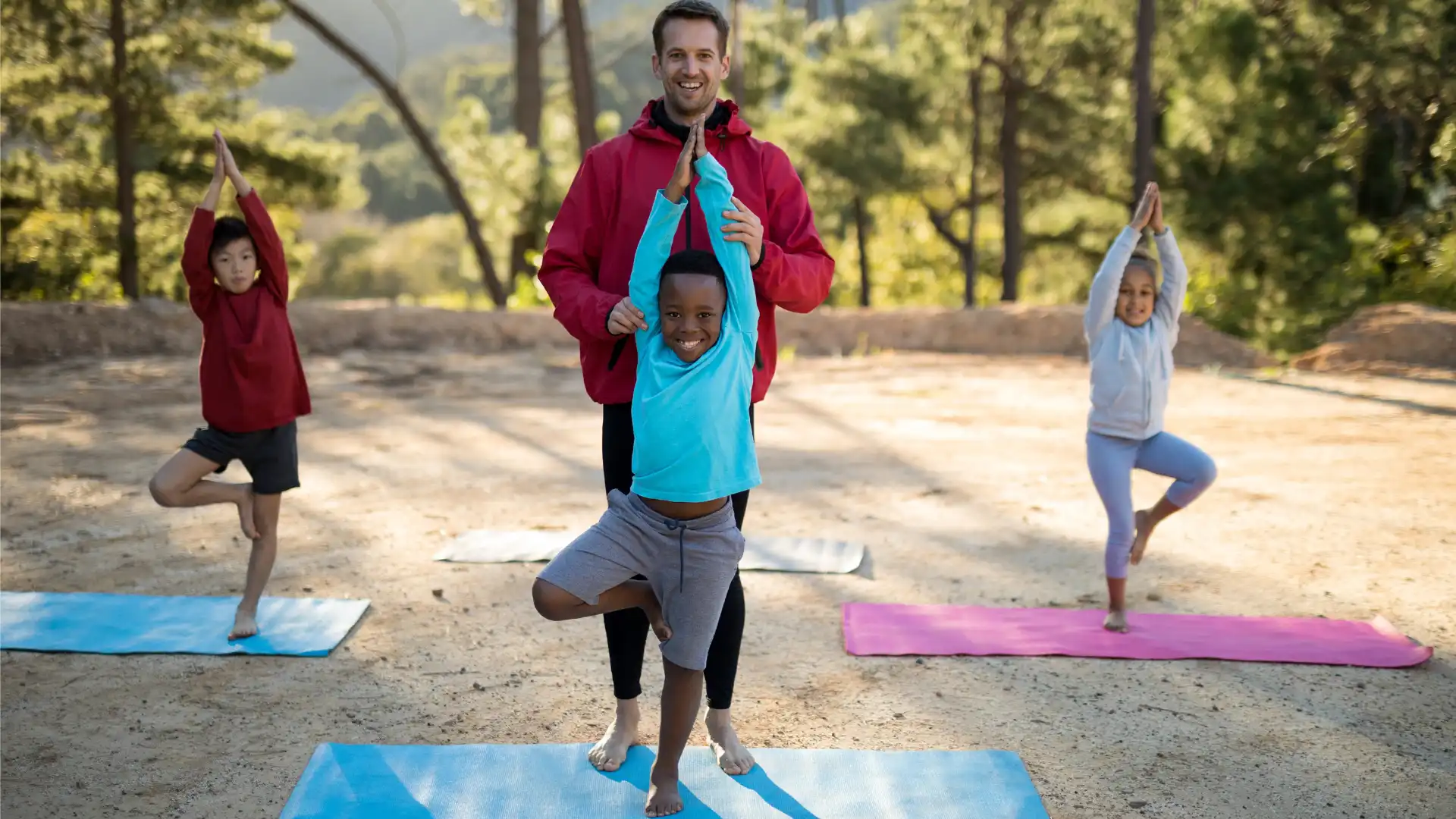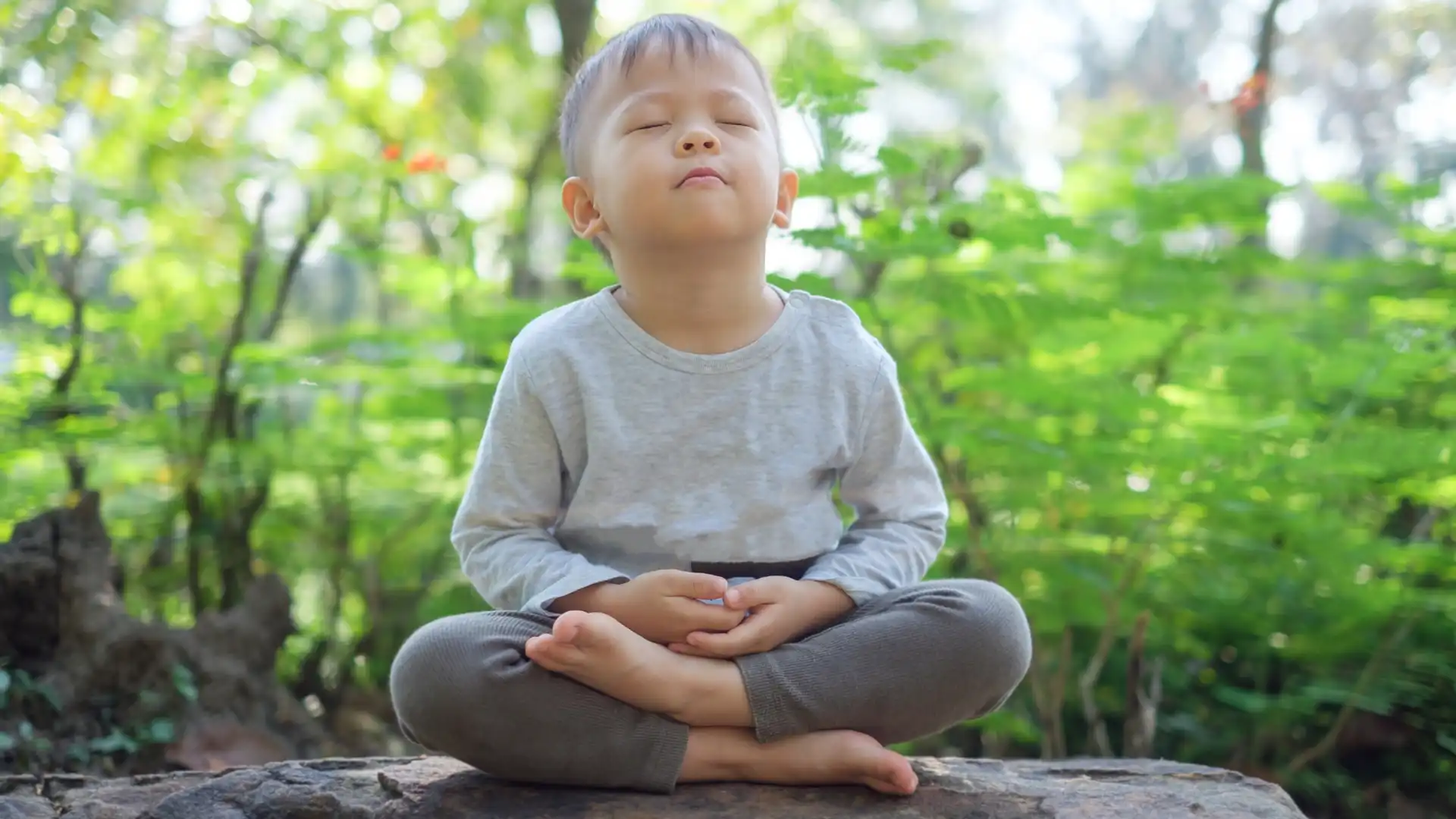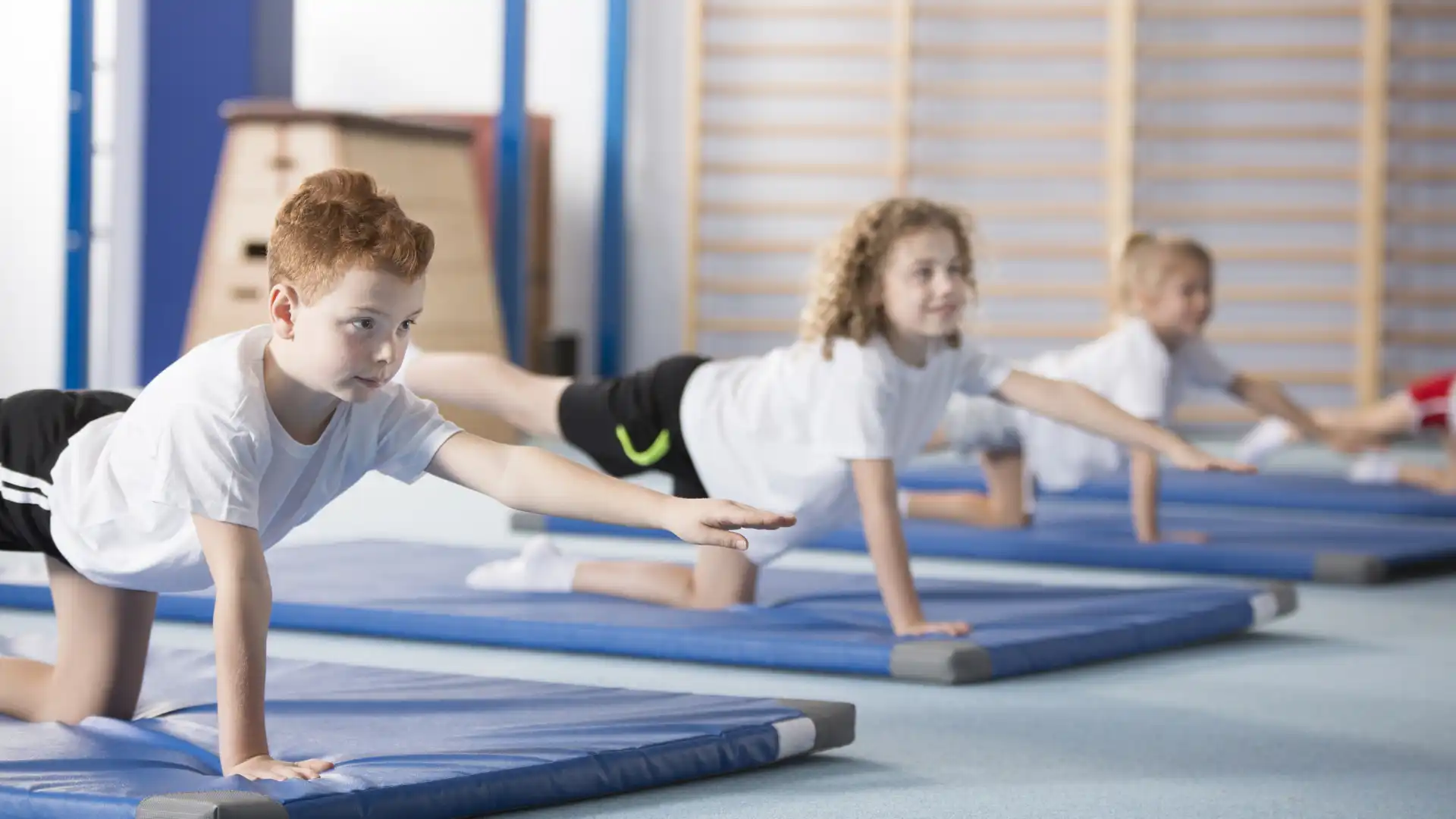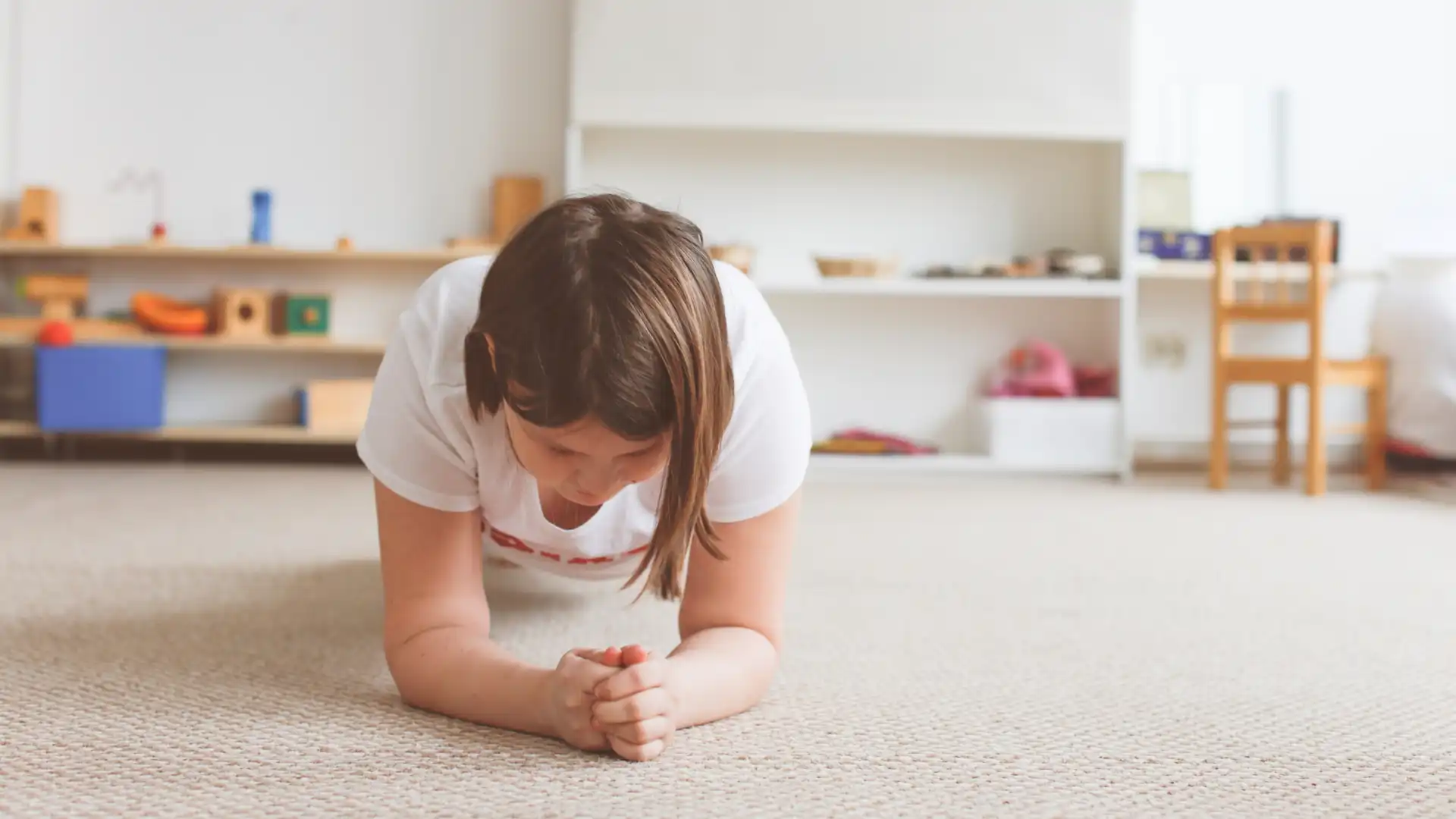From Twinkies to Trikonasana: Yoga and Childhood Obesity

Ask someone to think about children, and they’ll likely picture little ones who generally appear healthy, playing outside with wide-eyed grins.
The reality of many modern children, unfortunately, contrasts with this pleasant picture of youthful health. When once young ones indulged in healthy snacks and enjoyed physical activities, they now consume more processed and highly caloric foods and drinks, while also spending more time in front of screens than moving their bodies.
According to the Centers for Disease Control, “ … childhood obesity has more than doubled in children and quadrupled in adolescents in the past 30 years,” and “ … in 2012, more than one-third of children and adolescents were overweight or obese.” The problem is immense and growing.
Yoga: An Option to Treat Childhood Obesity
Yoga is a viable treatment option in the fight against childhood obesity because it addresses this issue systemically and holistically. The practice offers children the physical benefits of increased flexibility, endurance, muscle development, gross-motor skill enhancement, and healthful calorie-burning.
Yoga can help children develop physical skills and capacities that allow them to feel more confident and find increasing pleasure in physically challenging activities. That can lead overweight children to begin thinking about physical activities as compelling alternatives to passive ones such as gaming and watching television. Such shifts of interest can lead to a lifetime of taking joy in being healthfully active.

Even more than that, however, yoga can guide children to healthier relationships with food, themselves, and others. Problems with these aspects of their lives can be at the root of their weight problems.
Yoga can, therefore, often address the causes rather than the symptoms. Yoga can also help children learn coping skills for stress. With that learning, they can find inner resources to grapple with life challenges, rather than another unhealthy snack and hour of screen time. These tools include connecting back to full and deep breathing, acceptance, and releasing unconstructive self-criticism.
Again, those improvements can set the stage for a lifetime of healthy weight maintenance, as many adults with weight challenges similarly find how to lose weight and keep it off through those coping skills.
Acting upon likely future problems before they arise is essential; the CDC also describes how overweight children are likely to become overweight adults. This generally increases risks for developing various cancers, apart from many other health consequences.
Yoga in Schools Promotes Wellness
How to enact such prevention? The CDC goes on to describe that schools have a critical role to play in the issue because they are uniquely poised to guide children to healthier behaviors and engage them in associated activities.
The Kripalu Center for Yoga and Health has recognized that schools are indeed the place to act to promote children’s wellness. Its Yoga in the Schools Program seeks to make yoga a more visible and influential force in schools.
The program “targets Social and Emotional Learning (SEL) competencies, including stress management, emotion and behavior regulation, self-appreciation and confidence, and strong relationship skills.”

Improvements in those areas can help children to overcome the socio-emotional challenges often at the heart of their weight problems. The program’s physical benefits include “improved athletic performance, increased bodily awareness, increased flexibility, alignment, and core strength, increased confidence in physical abilities.” When children feel more confident in their bodies’ abilities, they want to engage in physical activities.
Kripalu’s program has also demonstrated substantial academic gains, including higher grades and test scores, improved attendance, and increases in positive attitudes toward school participation (kripalu.org). Such benefits can help to make a case for yoga in schools to skeptical school administrators and board members, who are balancing increasingly tight operating budgets.
I’d add that yoga requires only relatively simple and inexpensive equipment and relatively small amounts of space. For instance, mats are the bare minimum necessary props. Those are available online for as low as $6, and even less in package deals (such as for classrooms or entire student bodies). Teachers can make space for a class to practice together by simply moving desks.

All of that contrasts with the expensive and space-consuming requirements of many competitive team sports, such as basketball and football. Compensating yoga teachers is another financial requirement, but so is paying coaches for team sports. Kripalu also trains teachers in children’s yoga, who can then incorporate it into their curriculums.
There are no extra expenses or other resources necessary. All of this can allow for the creation and continuance of students practicing together, with knowledgeable teachers and instructors guiding them. In such environments, youths struggling with weight issues can gain both emotional support and concrete skills to achieve high levels of holistic health that are possible for them.
Such improvements are critical in that most impressionable life stage of youth when people grow (for the most past) into who they will be for their lifetimes. Yoga can be a necessary and powerful ally for individuals who struggle with obesity.
It can make all the more difference, the earlier they join with it. That is the union that is yoga—possible for all individuals, but with additional potential to reverse the unfortunate health epidemic of rising childhood obesity.
Also, read...
Yoga In Schools Improves Health Research Shows
Mind-Body Benefits of Yoga for Kids: What Does New Research Say?
Breath Awareness for Young Children
Related courses

Kathryn Boland is an RCYT and R-DMT (Registered Dance/Movement Therapist). She is originally from Rhode Island, attended The George Washington University (Washington, DC) for an undergraduate degree in Dance (where she first encountered yoga), and Lesley University for an MA in Clinical Mental Health Counseling, Expressive Therapies: Dance/Movement Therapy. She has taught yoga to diverse populations in varied locations. As a dancer, she has always loved to keep moving and flowing in practicing more active Vinyasa-style forms. Her interests have recently evolved to include Yin and therapeutic yoga, and aligning those forms with Laban Movement Analysis to serve the needs of various groups (such as Alzheimer’s Disease patients, children diagnosed with ADHD, PTSD-afflicted veterans – all of which are demographically expanding). She believes in finding the opportunity within every adversity, and doing all that she can to help others live with a bit more breath and flow!



